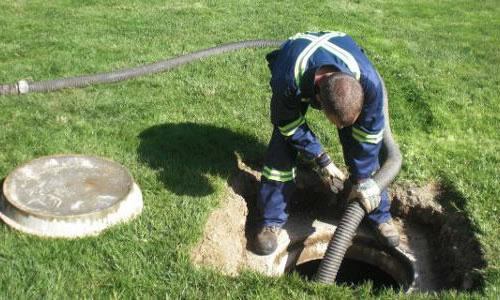
If your home isn’t connected to the city’s main sewer line, then you have a septic system. These systems work by collecting the used water from all areas of your house and then transferring the water into the septic tank. In septic systems, wastewater and solid waste are separated and broken down. Naturally, over time, solid waste accumulates inside the tank, making routine septic cleaning necessary. One of the most important yet overlooked parts of the maintenance is cleaning the septic filter. By trapping solid particles and keeping them out of the drain field, this filter, which is placed near the septic tank's output, prevents the entire system from failing. In this article, we will go over how you can clean and service this filter so your septic system continues to be as effective as ever.
Before starting anything, make sure to wear protective equipment such as masks, thick gloves, goggles, and clothes that are covering because, due to constant exposure to wastewater, septic tanks house a number of bacteria, and you wouldn’t want to be exposed to those.
You must first find and remove the septic tank lid in order to reach the filter. The outflow barrier, which is normally located at the far end of the tank where treated wastewater exits toward the drain field, contains the filter. So, you can locate it this way. However, most modern septic systems include a riser, which makes it easier for you to find the tank's access port. After finding the lid, you should lift it, and then you’ll see the filter. It might be hard for you to understand the filter at first glance; it may be heavy with collected sediment. If this is the case, you can carefully reach it with a hook. Filters may have a seal, so it’s normal for you to face a little resistance. After this, gently remove the filter. If you can’t locate the filter, it might be better for you to call a septic company in Atlanta instead, so professionals can both inspect and clean the septic tank or do a whole septic pumping.
This part may be the easiest. To clean the septic filter, all you need to do is to spray the filter with a garden hose. Clean all parts using the hose, and if the pressure isn’t enough, you can use a gentle brush. Make sure to not use any chemical cleaners, as this can damage the filter. After cleaning, inspect the filter thoroughly for any signs of damage or deterioration. If you see damage, make sure to give a call to professionals.
After this part, all you need to do is to carefully replace the filter in its original position. Make sure to do this slowly, and when you’re done, check twice to see if it’s seated and sealed properly and doesn’t move. Close the septic tank lid, and you’re done!
Septic filters should be cleaned regularly, just like how your septic system needs cleaning regularly. The exact duration is different for everyone. However, for the average four-person household, it should be cleaned every 6-9 months.
If, for a reason, you cannot find the septic filter, or if you’ve noticed that the filter is damaged or broken during cleaning, give a call to the professionals at Rooter Septic Services. We offer a variety of septic services, including maintenance, repairs, and replacements in your area, and are more than happy to help you with any kind of septic trouble you might be facing. Remember, the functionality and the lifespan of your system can be increased with routine septic maintenance, so please don’t skip this crucial yet easy step. Call us today to learn more about us and our services and schedule your appointment.